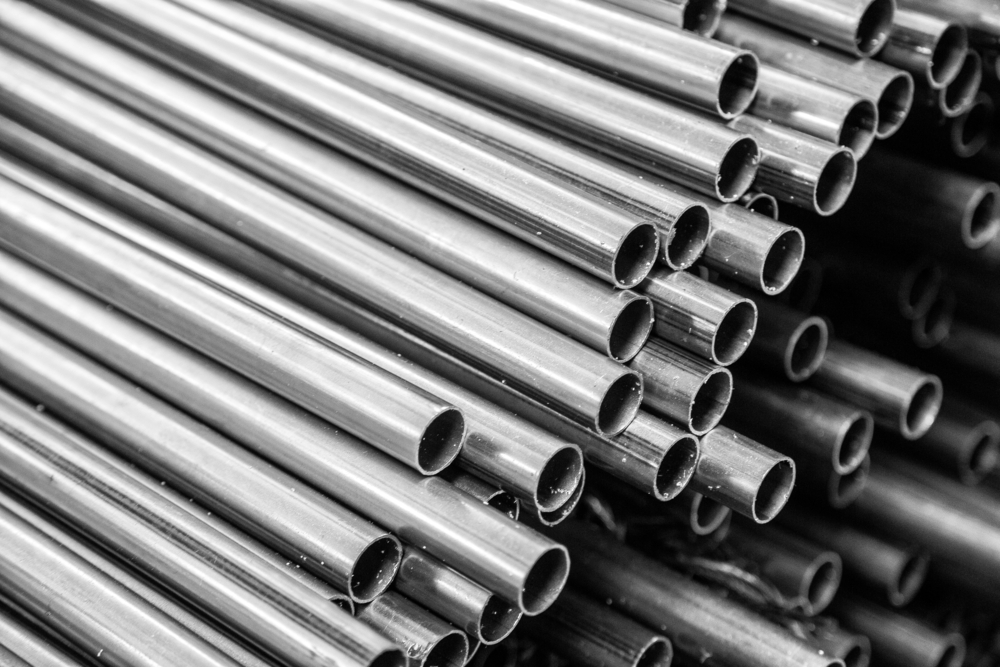1-Ensuring Steel Pipe Sustainability: Unraveling the Profound Environmental Impact
Steel pipe is ubiquitous across infrastructure and industries in the modern world. However, with global steel production reaching over 1.8 billion metric tons in 2019 (World Steel Association), understanding and mitigating the environmental footprint of widespread steel manufacturing and pipe products remains critical. As essential materials forming bloodlines of construction, mild steel (MS) pipes power infrastructure development worldwide. Beyond structural frameworks, applications span municipal water supply, sewerage lines, gas distribution, automotive sectors, and more.
Though ubiquitous and economical, examining environmental externalities around mainstream MS pipe manufacturing remains critical amidst rising climate change concerns over the next decades of urban growth across emerging economies especially.
This article will analyze key aspects around the environmental impact of MS pipe production, manufacturing process improvements to reduce related carbon emissions, waste, and pollution, and crucial considerations around steel pipe sustainability as societies navigate a climate-conscious future across construction needs.
2-Steel Pipe Enables Modern Societal Needs:
Steel pipes serve as the building blocks underpinning much of our water, energy, and construction infrastructure needs. Applications span municipal plumbing and gas/oil pipelines to structural foundations in high-rise buildings. The versatility, durability, and cost-effectiveness of steel pipe systems have fueled market demand projections to reach $81 billion by 2026.

With urbanization and revamped infrastructure priorities, especially across developing regions, requirements for steel pipe supply chains will accelerate. However, this necessitates a holistic evaluation of long-term environmental impacts alongside steel’s societal value propositions.
3-Minimizing The Carbon Footprint Through Cleaner Steel:
Achieving net-zero carbon emissions across heavy industries by 2050 remains an urgent, collective priority codified by multinational pacts. As iron and steel production alone contributes 7-9% of global carbon dioxide outputs (IEA), decarbonization of mainstream steel pipe manufacturing is essential. Current dominant methods for creating MS pipes depend heavily on primary steel from high-emission blast furnaces predominating developing markets. With over 1.8 billion metric tons of global steel produced in 2019 alone (World Steel Association), curbing related carbon emissions remains urgent.
Just producing one ton of primary steel discharges almost 1.8 tons of carbon dioxide via conventional mineral-based iron and steelmaking (Cullen et al). As key products of primary steel plants, MS pipes thereby carry embedded upstream emissions plus further direct carbon outputs from shaping processes.
American Petroleum Institute data finds average MS pipe usage emits between 1.4 to 1.6 tons of CO2 per ton depending on dimension specifications. For structural tubes, greenhouse gas emissions are approximately half at 0.7 to 0.9 tons CO2 per ton. Obviously, planetary constraints necessitate mitigation.
Steelmaking Carbon Emissions
The integrated steelmaking process consisting of coke production from coal, iron ore agglomeration, and primary steel processes in blast oxygen furnaces bears massive carbon emissions. Just 1 ton of steel produced emits almost twice its weight in CO2 via conventional methods. Commercial steel pipe production heavily relies on primary integrated works. With coal combustion emitting immense CO2, driving down these large “process emissions” is vital.
4-Transitioning To Cleaner Steel:
Cutting “Life Cycle” Emissions
However, beyond transitioning primary production, choosing more sustainable “secondary” or recycled steel also curbs lifetime pipe impacts. Using scrap steel curtails energy needs by almost 75% while decreasing CO2 emissions dramatically. Tata Steel finds recycled steel pipelines can emit 80% less greenhouse gases overall versus primary steel counterparts over the build lifecycle.
Governments are also driving change through carbon pricing mechanisms and industry partnerships fostering innovation. Green public procurement policies prioritizing low-carbon materials procurement also promise market transformation.
AVOIDING FUTURE LOCK-IN
Given long functional lifecycles, choices around material inputs today create path dependencies for years. Locking developing nations into pollutive MS pipe systems risks irreversible climate consequences without rectification options later.

Policy nudges towards low-carbon procurement combined with industry innovations shifting pipe production away from emission-intensive iron and steel sources can circumvent this lock-in through energy-efficient, less carbon-intensive MS pipe manufacturing pathways.
RECYCLED Steel pipe
Using recycled steel scrap significantly lowers energy consumption by almost 75%, thereby decreasing CO2 emissions dramatically. Certain grades of MS pipes suit high recycled input usage. Moving towards quality secondary steel inputs reduces embedded lifetime carbon.
5-Optimizing Manufacturing Processes:
Aside from production sources, enhancing efficiency in pipe manufacturing itself reduces energy consumption. We are cutting production losses and curbing waste generation. Aside from altering feedstock sources, boosting efficiency within MS pipe manufacturing itself promises reduced carbon expenditures. Curtailing production losses limit material wastage and associated reprocessing emissions
For prominent Pakistani steel pipe players like Mehboob Steel Traders, onsite billet mills and superior FQM practices ensure minimal yield losses, quality standards, and lower carbon outputs relative to cohorts while bolstering competitiveness. Digital integration across production planning, inventory management, and logistics also squeezes out excess emissions. Firms recognize sustainability and profitability interlink.
Managing Industrial Wastage
Steelmaking generates solid waste and byproducts including slag, dust, and sludge. Over 500MT of steelmaking slag output already competes with cement production (Shi). While partial slag recycling into construction occurs, broader “circular economy” uptake cutting waste remains lacking.
Water Conservation
Additionally, steel and pipe production utilize vast water volumes for heating, cooling, and cleaning purposes. As water risks rise, conservation and recycling initiatives are being initiated. Tata Steel claims one of the highest recycling rates in global steel (Tata Steel). Others are investing in rainwater harvesting infrastructure and aiming for near-zero liquid discharge through condensate recovery and waste recycling.
6-END OF LIFE RECYCLING
Finally, easing reuse avenues improves sustainability. Design enhancements must enable fuller recyclability. As key steel industry body World Steel notes, around 85% of steel construction products hold reusable potential, including MS pipes. Deepening real-world collection and recycling systems requires greater policy support.
Conclusion: Towards Sustainable Steel Pipes Lifecycles
As environmental consciousness and climate change concerns accelerate across societies, achieving true steelpipe sustainability requires cross-value chain and policy-level coordination balancing developmental needs with ecological stewardship. Tracing emissions embedded across material sourcing, production, lifetime usage, and end-of-life disposal is crucial, as are binding emissions reporting standards (Material Economics). Legislators must reinforce circular business models ensuring steel piping achieves full reusability or recyclability instead of landfilled waste.
Industry pioneers driving rapid technology innovation, operational excellence strategies, and renewable integration will steward the inevitable larger transition. Ultimately steel piping forms a critical infrastructure backbone for growing communities. Ensuring the long-term environmental integrity behind powering these steel arteries remains imperative and eminently achievable through collective action now.
Ultimately, mild steel pipes answer profound needs globally – from water access and hygiene to energy availability through gas piping networks, thereby catalyzing poverty alleviation itself. The holistic focus must become decarbonizing essential MS pipe production through collective multi-stakeholder initiatives balancing equitable development with ecological sustainability across the entire lifecycle. Policy, civil society, and industry innovation in lockstep can reconcile these dual objectives for climate-compatible infrastructure advancement worldwide.

We have the best quality steel pipes. and we hope you have the best experience if you take our products.
© 2024 Mehboob Steel Traders. All rights reserved.
